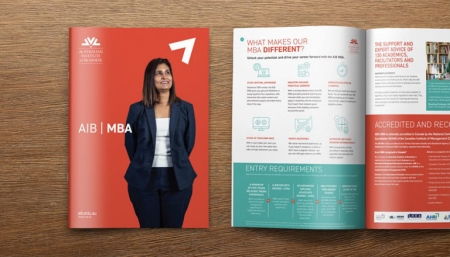5 presentation strategies for effective presentations

Let’s face it – being informative, dynamic and engaging all at the same time is a big ask, but that is exactly what is required for a winning presentation. Sure, it’s easy to whip up some quality PowerPoint slides or read some well researched and prepared notes to an audience, but how do you make a merely good presentation great? Here are 5 strategies that will have you on your way to effective presentations.
1. Get the structure right
When doing a presentation, preparation is essential. For your audience to follow what you’re talking about, you need to have a pre-defined structure. The best way of formulating this structure is to put yourself in the shoes of the people you need to speak to. If you’re presenting to a new client, think about their needs and expectations. If you’re presenting to a conference full of professionals, think about what those people actually want to hear. Think carefully about what it is that your audience needs to know and break that down into interesting, digestible chunks of information in a logical structure.
2. Know your stuff
Next, make sure you know your stuff. Do the research required and make sure the information you’re presenting is 100% factual and correct. Spending time preparing a presentation is certainly time well spent. Use examples to demonstrate your points, and don’t be afraid to use anecdotes or stories to help convey information. If presenting statistics, make sure you understand where they come from, what assumptions have been made and think about what questions your audience may ask when presented with the information.
3. Make eye contact
Making eye contact is key to delivering an effective presentation, and it’s absolutely crucial if you wish to engage your audience. Simply reading from a PowerPoint presentation, or worse, from a notebook, is not good enough. Try using cue cards with salient points to jog your memory, but most of all practice your presentation. Rehearsing out loud will not only help you to remember the content, but it’s also a great way to decide what’s working and what’s not in your delivery of the information.
4. Use more imagery than text
Remember the old adage, a picture says a thousand words? Effective presentations make good use of imagery. If you’re talking to PowerPoint slides, avoid cluttering them with so much information that no one will read them. Include only key points on the slides and intersperse images throughout your presentation to create interest and to connect to your audience’s senses. If you need to convey complex information, consider an infographic, a diagram or graph to show the information clearly in a visual format.
5. Be the best version of yourself
Doing presentations can be stressful, and it’s often tough to pull it all together if you’re feeling nervous or unprepared. It’s normal to be a little nervous, but try some breathing exercises prior to your presentation to keep the nerves at bay. Avoid drinking milky drinks before public speaking as it thickens saliva and may affect your speech or increase the need to clear your throat.
A 10 minute presentation can feel like hours if you’re feeling nervous, and often our body’s natural response is to rush, so it’s important to remember to slow down. Ensure your speech is clear and avoid speaking too quickly. Remember, being the best version of yourself is aided by sufficient preparation and practice. If you’ve done this, it will be much easier to relax and be confident in your ability to deliver a great presentation.
What do you think?
Delivering engaging, successful, and effective presentations is certainly harder said than done. We’d love for you to add to this list. What other strategies do you recommend to take presentations to the next level?
This article was written by Ellenor Day-Lutz on behalf of the Australian Institute of Business. All opinions are that of the writer and do not necessarily reflect the opinion of AIB.





